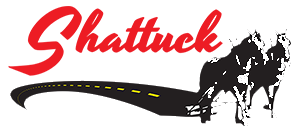New Asphalt Driveway Care FAQ

Whether you’re planning a new driveway or want to turn your stone driveway into a smooth driving and parking area, we can plan, excavate and stake out a completely new asphalt driveway for your needs. We’ll even show you what the plan will look like before we begin.
Need an extension to your existing driveway? We can take care of that too! Let us answer some of your questions what to do with your new driveway and give you tips on driveway maintenance.
[accordion]
[pane title=”How soon after paving can I use my new driveway?” ]
You may walk on it immediately but keep automobile traffic off your new driveway for at least three (3) full days (longer in hot weather). The liquid asphalt in blacktop needs approximately 6 to 12 months to fully harden and cure. It will remain somewhat soft and pliable until then.
It will never be as hard as concrete, but your asphalt driveway will be very durable when fully cured.
[/pane]
[pane title=”Is it okay to park my car on the new driveway?”]
During the first six months to a year, your driveway is still curing. The following new asphalt driveway care tips are recommended during the curing process:
- Try not to park exactly in the same place every day.
- Don’t turn your steering wheel back and forth if your car isn’t moving.
- If you must use a car ramp or jack stand to work on your car, place some plywood under the ramp or jack to help distribute the weight.
[/pane]
[pane title=”What causes scarring on my driveway?”]
Driving too fast is one of the leading causes of driveway scarring. Turning around in tight places, pulling in too quickly and “peeling” out can scar your new driveway. Rule of thumb: take it easy.
[/pane]
[pane title=”Should I keep heavy vehicles off my new driveway?”]
Since excessive weight from heavy vehicles can cause depressions in your new driveway, it is advisable to keep vehicles such as concrete trucks, oil trucks or any large, commercial truck off your new driveway for 60 days.
If you must store your camper or boat on the new driveway, place some plywood underneath the tongue jack and tires to help distribute the weight.
[/pane]
[pane title=”What else causes holes or depressions in my driveway?”]
Lawn chairs and bicycle or motorcycle kickstands on your new driveway can create holes and depressions due to the weight being exerted in concentrated areas. Also, in the warmer months, don’t walk on your new driveway with pointy high heels!
[/pane]
[pane title=”Should I avoid driving on the edges of my new driveway?”]
The edges are actually the weakest part of your new driveway since it lacks side support. So you must avoid driving on the edges or else they will crumble or crack.
It is recommended that you build up the sides of your driveway with topsoil to support the edges and enhance its appearance. Be sure to allow about one inch from the top of the driveway for sod growth and water drainage
[/pane]
[pane title=”Is it normal for asphalt to have a varied texture?”]
The very nature of asphalt may cause your driveway to look smoother in one place and rougher in others. Asphalt is made up of various sizes of stone, sand, liquid asphalt, and other ingredients. This will cause the surface of your driveway to have a varied texture. Also, if your driveway has been raked or spread with hand tools, it will have a different appearance than the texture of one that was machine spread.
[/pane]
[pane title=”What can I do if my driveway develops holes or starts to crack?”]
First, it is best to avoid those things that cause cracks and holes in your new driveway. Gasoline, oil, anti-freeze, power steering and transmission fluid spills and leaks will dilute the liquid asphalt component. These will end up producing holes in your asphalt driveway.
If you cannot avoid these things and a hole develops, fill it with cold patch.
Small, hairline cracks may develop in your driveway during the winter. This is due to the expansion and contraction of the ground during that time. Fill these cracks with crack filler or sealer available at your local building supply store or call us to have it done professionally.
[/pane]
[pane title=”How can I preserve and protect my new driveway?”]
To preserve and protect your new driveway, always seal it after it has been paved.Leaving asphalt unprotected it becomes rough, dries out, and essentially loses its life very rapidly. The result is overall deteriorization, ridges, and upheaval causes by frost and freezing.
Sealing also protects your asphalt driveway from the effects of gasoline, lube oil, grease, road salts, and anti-freeze leaking from vehicles, rendering it impervious to these harmful elements. Plus it fills hairline cracks that may result during the winter.
But sealing your new driveway too soon may cause damage! Having your driveway sealed professionally along with regularly scheduled maintenance will preserve and protect your new driveway for many years to come.
[/pane]
[/accordion]
